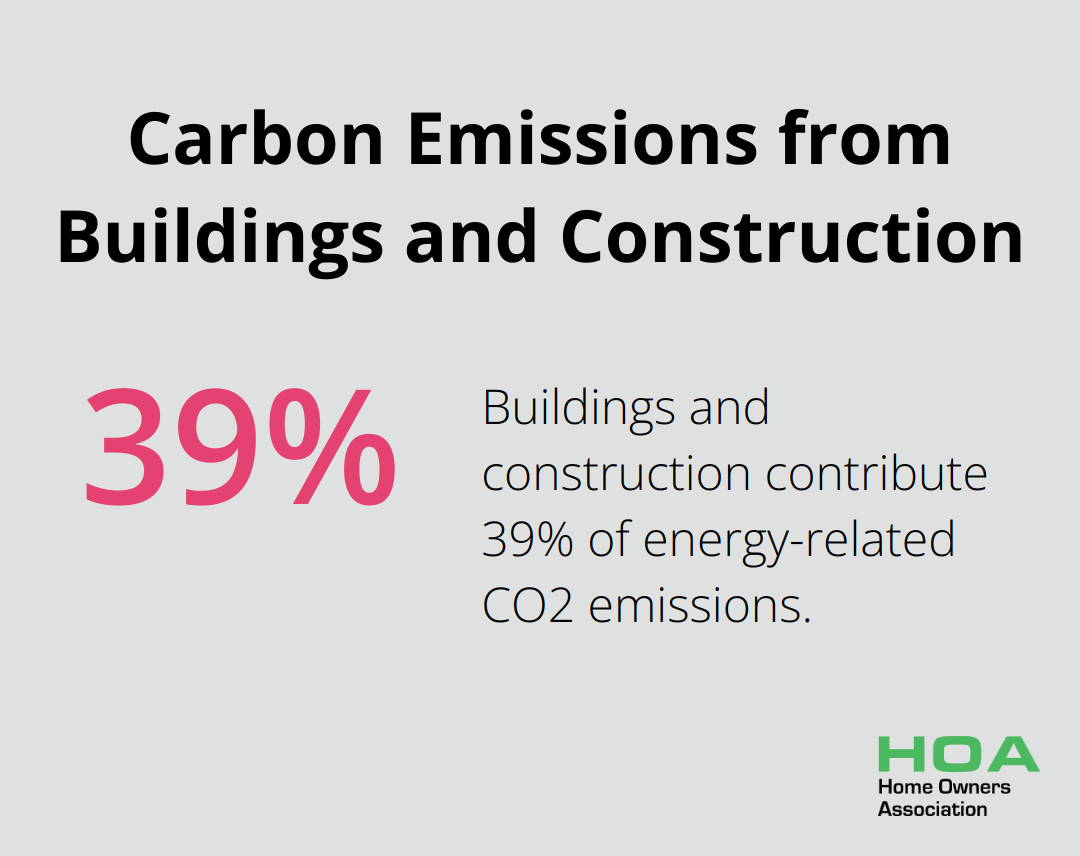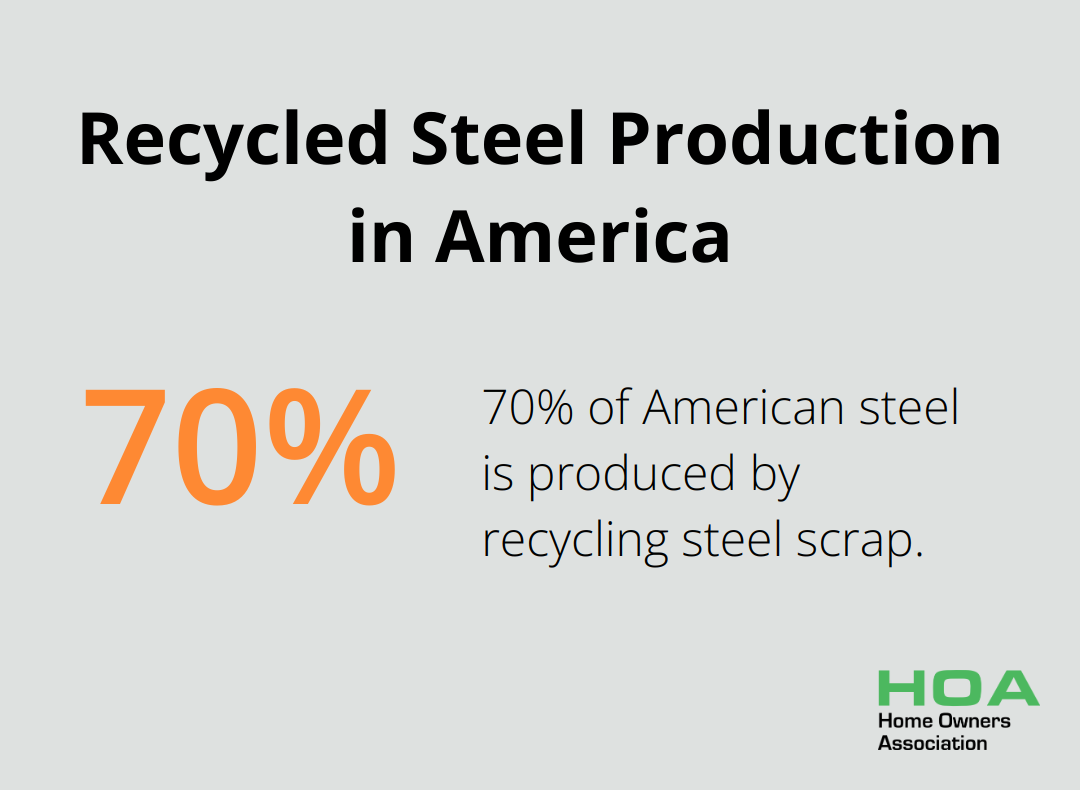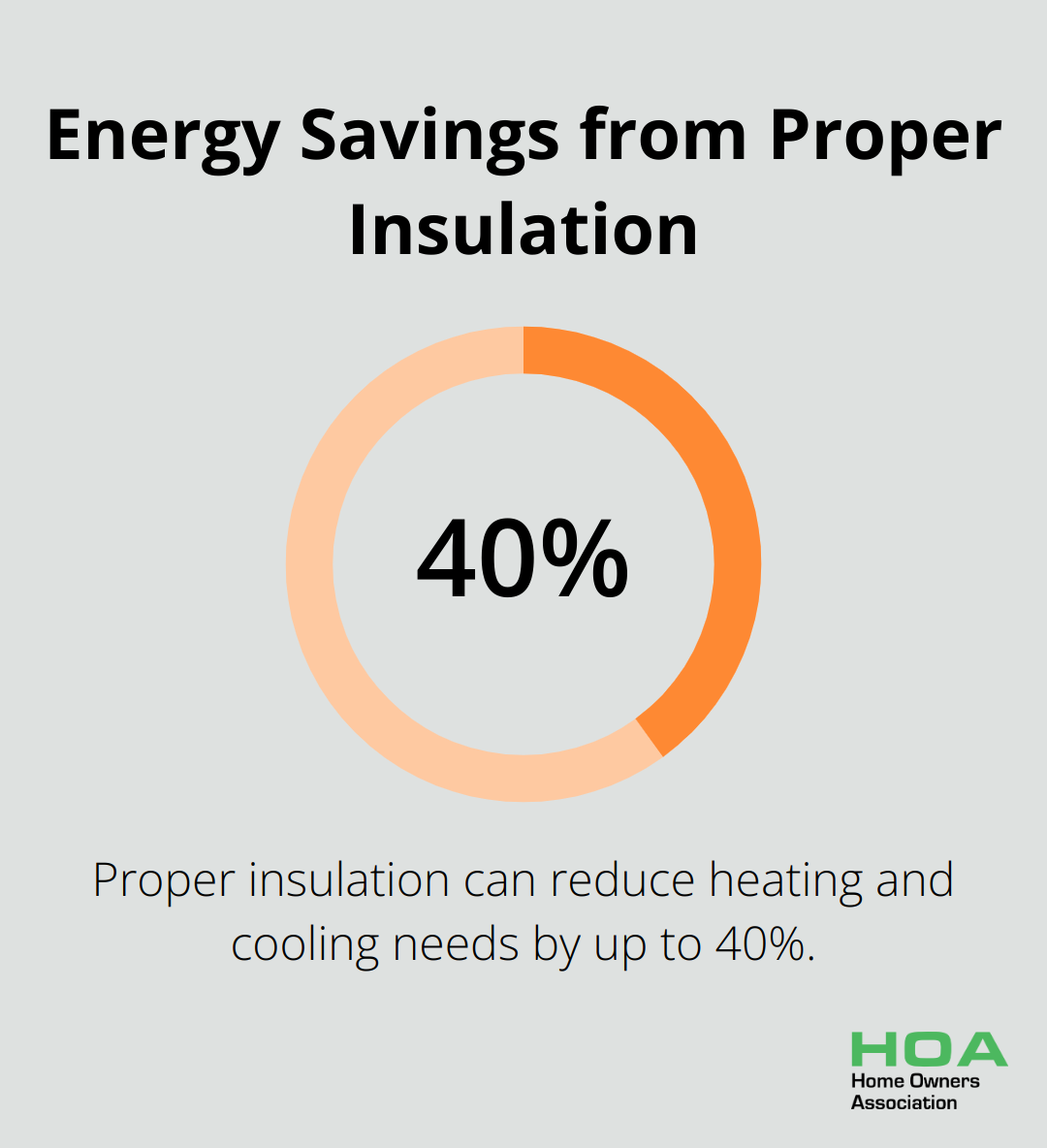
At Home Owners Association, we understand the growing importance of sustainable construction practices. The choice of building materials plays a crucial role in reducing environmental impact and creating healthier living spaces.
Sustainable materials for building offer numerous benefits, from improved energy efficiency to reduced carbon footprints. This guide will help you navigate the world of eco-friendly construction options and make informed decisions for your next project.
What Are Sustainable Building Materials?
Definition and Importance
Sustainable building materials form the foundation of eco-friendly construction. These materials minimise environmental impact, conserve resources, and promote long-term ecological balance. The construction industry has witnessed a significant shift towards these materials, driven by environmental awareness and stricter building regulations.
Environmental Impact of Construction
The construction industry contributes heavily to global carbon emissions. The World Green Building Council reports that buildings and construction account for 39% of energy-related carbon dioxide emissions. This statistic highlights the urgent need for sustainable practices in the industry.

Traditional construction methods often deplete natural resources and release harmful pollutants during production. For example, cement production alone contributes to about 8% of global CO2 emissions. The use of sustainable alternatives can dramatically reduce this environmental footprint.
Benefits of Sustainable Materials
Energy Efficiency
Sustainable building materials often boast superior insulation properties, which leads to improved energy efficiency. High energy efficiency needs to be targeted by reducing environmental impacts through energy performance benchmarking.
Healthier Living Spaces
Eco-friendly options (such as low-VOC paints and formaldehyde-free wood products) promote better indoor air quality and occupant health. This improvement is particularly important considering that people spend about 90% of their time indoors, according to the Environmental Protection Agency.
Durability and Cost-Effectiveness
Contrary to common misconceptions, sustainable materials often outlast their traditional counterparts. For instance, bamboo flooring can last up to 25 years with proper care, compared to 10-15 years for conventional hardwood. This longevity translates to reduced replacement costs and less waste over time.
While the initial cost of sustainable materials may be higher, they often prove more cost-effective in the long run. Energy-efficient materials can significantly reduce utility bills, and their durability means less frequent replacements. A report by Mckinsey & Company suggests that green buildings can yield a return of up to 5% in property value.
The Australian market has shown an increasing demand for homes built with sustainable materials. This trend reflects not only growing environmental consciousness but also the practical benefits these materials offer to homeowners.
As we explore the world of sustainable building materials, it’s important to understand the various types available and how to choose the right ones for your project. Let’s take a closer look at the different categories of sustainable materials in the next section.
Exploring Sustainable Building Materials
At Home Owners Association, we prioritise helping our members select sustainable building materials. These eco-friendly options reduce environmental impact and offer long-term benefits for homeowners.
Recycled and Reclaimed Materials
Recycled and reclaimed materials have become popular in sustainable construction. These materials breathe new life into existing resources, which reduces waste and conserves energy. Seventy per cent of American steel is produced by recycling steel scrap to produce new steel using electricity.

Reclaimed wood stands out as another excellent option. It adds character to homes and reduces deforestation. Many homeowners have successfully incorporated reclaimed wood into their projects, creating unique and environmentally friendly spaces.
Renewable Resources
Renewable materials replenish rapidly through natural processes, making them an excellent choice for sustainable construction. Bamboo is versatile for various applications, including construction. Its incredible strength and versatility make it suitable for flooring, furniture, and even structural elements.
Cork has also gained traction as a renewable material. Harvesters collect cork from the bark of cork oak trees without harming the tree itself. Cork flooring offers durability, natural insulation, and hypoallergenic properties, which appeals to eco-conscious homeowners.
Low-Impact Manufactured Materials
Innovative manufacturing processes have led to the development of low-impact materials that offer excellent performance with reduced environmental consequences. Green concrete, for example, incorporates recycled materials and industrial by-products, which reduces CO2 emissions associated with traditional concrete production.
Hempcrete emerges as another promising material. Manufacturers create hempcrete from the inner core of the hemp plant mixed with lime. This carbon-negative material absorbs more CO2 during its growth than it emits during production. It also provides excellent insulation properties, which can potentially reduce energy costs for homeowners.
Selecting Sustainable Materials
When choosing sustainable materials for your project, consider factors such as local availability, durability, and overall environmental impact. Home Owners Association can provide guidance on sourcing these materials and connect you with suppliers (some of which may offer member discounts).
The selection of sustainable materials extends beyond environmental responsibility. It involves creating a healthier, more efficient home that can save money in the long run. As advancements in sustainable building technologies continue, the options for eco-friendly construction will expand, offering even more choices for conscientious homeowners.
The next chapter will explore the critical factors to consider when choosing sustainable materials, helping you make informed decisions for your building project.
How to Evaluate Sustainable Building Materials
Environmental Impact Assessment
The evaluation of sustainable building materials requires a comprehensive analysis of their entire lifecycle. This includes raw material extraction, manufacturing processes, transportation, installation, use, and eventual disposal or recycling. The Building Products Life Cycle Inventory (BP LCI) database, discussed by DG Jones, addresses challenges in developing a national Life Cycle Inventory (LCI) database for assessing building environmental impacts. This resource helps make informed decisions based on quantifiable data.
A study by the University of Bath found that timber frame construction can save up to 23 tonnes of carbon per home compared to steel alternatives. This significant reduction in carbon footprint demonstrates the importance of considering the full lifecycle of materials.
Durability and Performance Considerations
Sustainable materials must stand the test of time. Longevity reduces waste and the need for replacements. For example, engineered timber products often outperform traditional lumber in terms of durability and dimensional stability. These materials can maintain their integrity for decades, reducing the need for frequent repairs or replacements.
Energy efficiency is another important aspect of material performance. The choice of insulation can have a substantial impact on a home’s energy consumption. According to the Department of Industry, Science, Energy and Resources, proper insulation can reduce heating and cooling needs by up to 40%, leading to significant energy savings over time.

Local Sourcing and Transportation Factors
Sourcing materials locally supports the Australian economy and reduces transportation-related emissions. The Green Building Council of Australia emphasises the importance of using materials sourced within 800 kilometres of the project site to minimise environmental impact.
When selecting materials, consider their availability in your region. For example, if you’re building in areas with abundant timber resources, using locally sourced, sustainably harvested wood could be an excellent choice. This approach reduces transportation costs and supports local industries.
Health and Indoor Air Quality Implications
The materials we choose for our homes directly impact indoor air quality and, consequently, our health. Low-VOC (Volatile Organic Compounds) paints and finishes have gained popularity due to their minimal off-gassing. The National Health and Medical Research Council of Australia recommends choosing low-emission materials to maintain healthy indoor air quality. A review by Mannan et al. (2021) presents a broad spectrum of pollutants identified in both residential and commercial indoor environments.
Some sustainable materials, like wool insulation, not only provide excellent thermal performance but also naturally filter air pollutants. These dual-benefit materials can contribute to a healthier living environment while reducing energy consumption.
Final Thoughts
Sustainable materials for building offer numerous benefits for homeowners and the environment. These materials reduce carbon footprints, conserve resources, and create healthier living spaces. The durability and energy efficiency of eco-friendly options often result in long-term cost savings and improved comfort for residents.
Local sourcing of sustainable materials supports regional economies and minimises transportation emissions. As demand grows, innovation in this sector will likely increase, making eco-friendly choices more accessible. The building sector’s significant contribution to global carbon emissions underscores the importance of sustainable construction practices.
We at Home Owners Association support Melbourne homeowners in making informed decisions about sustainable building materials. Our resources and expert advice (which include member benefits) aim to make sustainable construction more accessible and rewarding. The choice of sustainable materials for building represents an investment in both our homes and our planet’s future.





